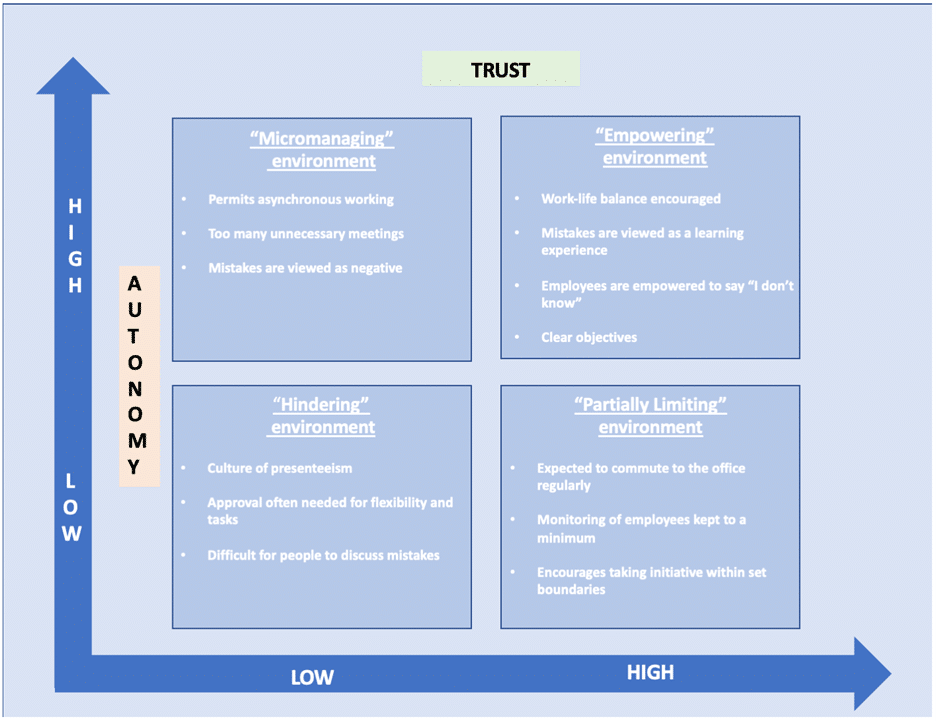How Much is Workplace Autonomy Worth to You? Navigating Return-to-Work Policies

“When do YOU get to take a summer break?” my just-out-of-school daughter asked me the other day as I was chauffeuring her to meet friends. At first, I was confused because I have two trips planned this summer, one with just the two of us before she goes off to camp and another family vacation. Isn’t that my summer break?
But then I realized that for students, a long uninterrupted summer break is an expected norm and a quintessential rite of passage. How many of us remember the song “School’s Out for Summer…”? However, once we leave behind the confines of the school system, a whole summer off becomes a luxury rather than an entitlement. But with that loss of a long summer vacation, you gain freedom and relative autonomy over your life as an adult. It’s a trade-off.
Trade-offs or compromises are something that employees are having to navigate more and more as return-to-work policies become more prevalent and well-enforced. A friend of mine who accepted a 2-day a week “suggested office time” job during the pandemic has suddenly found herself compelled to return to the office three days a week with a long commute, bringing to light the issue of autonomy into focus and how much choice employees need to be happy in their careers.

An image I recently encountered perfectly encapsulates the trade-off employees are facing. As the CEO of my own company, I enjoy an “Empowering Environment” that thrives on trust and autonomy. However, my friend’s experience has taken a 90-degree turn, as the job she accepted during the pandemic, once characterized by an “Empowering Environment,” has now shifted toward a “Partially Limiting Environment” due to the new remote-working rules going into effect.
While there are valid reasons for companies to adopt and enforce hybrid work arrangements—facilitating faster onboarding for new employees, creating more workplace synergies when colleagues from different functions share a coffee break and hallway conversations and ideas, and building deeper and more trusting relationships between colleagues—the problem lies in the execution.
Restrictions vs Freedoms
A lot of companies are focusing right now on restrictions rather than freedoms. Return to work CAN bring the freedom of getting to know the people behind the “Hollywood squares” of virtual meetings. It CAN bring the freedom of knocking on a colleague’s door rather than playing the scheduling game for yet another video call. It CAN bring the freedom to have walking 1-1s where you stretch your legs while talking about what really matters. Additionally, it can provide the serendipity of bumping into someone you’ve been meaning to reach out to but haven’t had the chance yet.
Activating Loss Aversion
By focusing on the requirements of returning to the office, companies inadvertently activate their employees’ loss aversion mode. As Nobel prize-winning economists Kahnemann and Tversky found, people hate losing $100 A LOT MORE than they appreciate winning $100. Commonly known as risk-aversion, this tendency means that you would rather keep what you have rather than risk your happiness for future gain. This means that potential gains from new opportunities can appear paltry in comparison to the loss of a generous hybrid work privilege.
Creating More Value in In-Person Interactions
If you’re a leader reading this, you might justifiably feel powerless to change your company’s remote policy. However, this issue affects you because if your people are feeling a true loss aversion due to your org’s policies, you suddenly have a team that’s much less happily working than they were a month ago. Therefore, it is essential to connect with each team member and discuss what can’t be changed—the remote policy—and focus on what you can influence.
Perhaps you can create a virtual meeting-free day when people are in the office so they have time to gather in person instead of remaining inside their separate offices glued to their screens. Perhaps you can schedule phone-only meetings during commute times so that people who want to can overlap their meetings with their (long) commutes.
One of my clients created in-office-only “lunch and learns” with cross-functional colleagues so that his team could eat a catered lunch together and expand their connections with, and knowledge of, others in the company.
My question to you is what can you do to make the in-person time your team spends together more valuable so it doesn’t feel like they’re only losing autonomy – but instead gaining something valuable to them in return?
Reframing Loss Aversion For My Daughter:
Circling back to where we started, how did I respond to my daughter in the moment? I mentioned that the average US worker gets 11 days of paid vacation. (This increases for most to 15 days after 5 years and 17 after 10 years.) I, running my own company take significantly more than that. When asked, my daughter estimated that I take 50 days of vacation per year – that’s on the high side (I wish!) – but still a good indicator that she recognizes that while my summers aren’t carefree, I can take vacation whenever I decide to with my family. Framing for her that although my summer appears to be a loss compared to hers, it is a substantial gain and freedom for me compared to many of my working peers.
Read more: Hybrid Work: Are We Doing It Wrong?